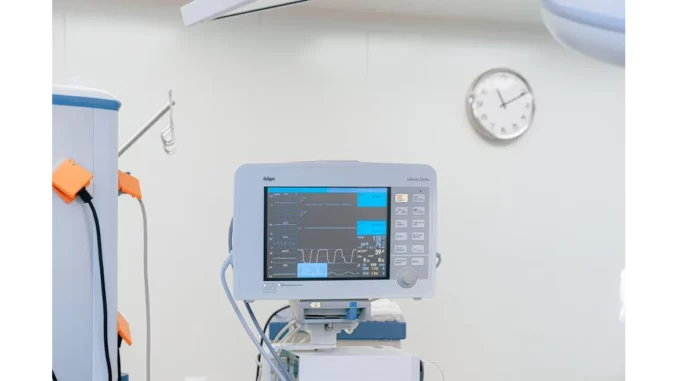
The realm of medicine has consistently embraced technological advancements, and the field of surgery stands as a testament to this trend. In recent years, robotic surgery has emerged as a revolutionary force within modern medicine, poised to reshape the landscape of surgical procedures. This article delves into the current applications and burgeoning frontiers of robotic surgery, while also examining its benefits, challenges, and future prospects.
The journey of robotic surgery can be traced back to the mid-20th century, yet significant strides were not realised until the latter part of the century. A pivotal moment occurred in 1985 when the PUMA 560, an early robotic system, successfully executed neurosurgical biopsies, marking the inception of robotic surgery as we recognise it today. However, the field truly came into its own with the introduction of the da Vinci Surgical System in the early 2000s. Developed by Intuitive Surgical, this system brought about a paradigm shift in minimally invasive surgery by offering surgeons enhanced precision, dexterity, and superior visualisation. Rapidly adopted across multiple surgical disciplines, the da Vinci system laid the groundwork for the widespread adoption of robotic-assisted procedures.
Robotic surgery, also known as robot-assisted surgery, employs a minimally invasive technique where specialised robotic systems aid surgeons in executing procedures with unprecedented precision and control. These sophisticated systems comprise robotic arms equipped with surgical instruments, a surgeon-operated console, and a high-definition vision system offering a magnified 3D view of the surgical field. The applications of robotic surgery are vast, spanning various medical specialties. In general surgery, procedures such as robotic-assisted cholecystectomy, hernia repair, and appendectomy are commonplace. In the realm of gynaecology, robotic-assisted hysterectomy, ovarian cystectomy, and myomectomy have gained traction. Urology has also embraced robotic surgery, with prostatectomy, nephrectomy, and pyeloplasty frequently performed using robotic assistance. Cardiac surgery, orthopaedics, and head and neck surgery are other areas witnessing a significant impact from robotic systems.
The advantages of robotic surgery are manifold, encompassing improved patient outcomes, reduced complications, expedited recovery times, cost-effectiveness, and enhanced experiences for surgeons. Among the most notable benefits is the precision and control afforded by robotic systems. This technology enables surgeons to perform intricate and delicate manoeuvres with an accuracy that far surpasses the capabilities of the human hand alone. Consequently, the risk of errors during surgery is diminished, leading to better patient outcomes and fewer postoperative complications. Additionally, robotic systems provide enhanced dexterity, allowing surgeons to manipulate tissues and instruments with superior control. The 3D visualisation offered by robotic systems enhances surgeons’ ability to safely and accurately navigate complex anatomical structures. Furthermore, robotic surgery mitigates the physical strain on surgeons, reducing fatigue and enabling them to maintain peak performance throughout extended procedures.
Despite these advantages, robotic surgery is not without its challenges and limitations. A primary challenge is the considerable initial cost of acquiring robotic surgical systems, which can be prohibitive for many healthcare facilities. The financial burden of purchasing and maintaining the equipment, coupled with the necessity for specialised training, can restrict access to robotic surgery, particularly in underserved or economically disadvantaged regions. Another significant challenge is the steep learning curve associated with mastering robotic surgery. Surgeons must undergo extensive training to become proficient in utilising robotic systems, and transitioning from traditional techniques can be daunting. Technical issues, such as equipment malfunctions and the absence of haptic feedback, also present concerns.
Looking to the future, robotic surgery holds immense promise, with several emerging frontiers poised to further transform the field. The miniaturisation of robotic systems and the development of micro-robotics pave the way for even less invasive procedures, while the integration of artificial intelligence and machine learning facilitates autonomous robotic surgery and predictive analytics. Telesurgery and remote surgery are broadening access to specialised surgical expertise, particularly in underserved areas. Meanwhile, nanorobots are being explored for targeted drug delivery and tissue repair, and advancements in haptic feedback and sensory augmentation are enhancing surgeons’ ability to perform delicate manoeuvres. The incorporation of genomic data into surgical planning is ushering in an era of personalised surgery, and 3D printing is yielding patient-specific surgical models and instruments.
As robotic surgery continues to advance, addressing the ethical and legal challenges associated with its use becomes paramount. Developing regulatory frameworks that ensure patient safety and establishing ethical guidelines to address issues such as informed consent and liability are crucial. By fostering collaboration, innovation, and ethical governance, healthcare professionals, researchers, and policymakers can harness the transformative potential of robotic surgery to enhance patient care and outcomes, ensuring that this innovative field continues to shape the future of healthcare.


Be the first to comment